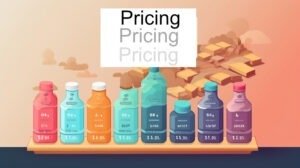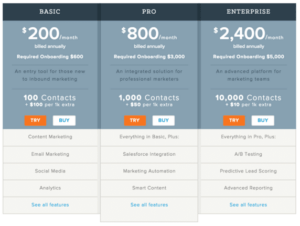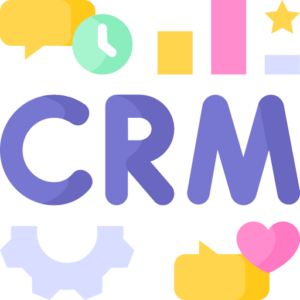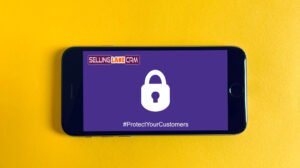Want To Sell? Study Psychology, Cognitive Bias, and Body Language.

Sales isn’t just about having a great product or delivering a pitch-perfect presentation. It’s about understanding people. The most successful salespeople are those who delve deep into the human psyche, leveraging knowledge from psychology, cognitive biases, and body language. By mastering these areas, you can significantly enhance your sales prowess and connect with your customers on a deeper level.
1. The Power of Psychology in Sales
Psychology plays a pivotal role in the sales process. It helps salespeople understand what drives their customers, what motivates them, and how they make decisions.
“People don’t ask for facts in making up their minds. They would rather have one good, soul-satisfying emotion than a dozen facts.” —
Robert Keith Leavitt
By understanding the psychological triggers that influence purchasing decisions, salespeople can tailor their approach to resonate with their audience. For instance, the principle of reciprocity suggests that people feel obligated to return a favor. In sales, this could mean offering a free trial or sample, which can increase the likelihood of a purchase later on.
2. Cognitive Biases: The Hidden Influencers
Cognitive biases are systematic patterns of deviation from norm or rationality in judgment. They influence our buying decisions, often without us even realizing it.
“The best salespeople know that their expertise can become their enemy in selling. At the moment they are tempted to tell the buyer something, instead they should be asking a question.” —
Neil Rackham
Some of the most influential cognitive biases in sales include:
- The Anchoring Bias: This is where people rely too heavily on the first piece of information they hear. In sales, setting a higher initial price (even if you plan to offer a discount later) can make your actual selling price seem like a bargain.
- The Confirmation Bias: People tend to search for and interpret information in a way that confirms their pre-existing beliefs. Salespeople can use this by presenting information that aligns with a customer’s existing opinions.
3. Body Language: The Unspoken Sales Tool
Body language can speak volumes. It can convey confidence, interest, trustworthiness, and a myriad of other emotions and characteristics.
“The body says what words cannot.” —
Martha Graham
For salespeople, understanding and harnessing the power of body language can be transformative. Some key aspects include:
- Mirroring: Subtly mimicking the body language of your customer can create a sense of rapport and trust.
- Open Posture: Standing or sitting with an open posture (not crossing arms or legs, for instance) can convey confidence and openness.
- Eye Contact: Maintaining appropriate eye contact shows you’re engaged and trustworthy.

Less Bias More Sales
With Selling Lane
30 Days Free– then Upgrade for Only $5
No credit card needed to try, click here
But I Sell online, How Can This Bias Stuff Help?

In the digital age, many salespeople might wonder how these principles apply to online sales. After all, you can’t read body language through a screen, right? While the dynamics might differ, the core principles of psychology, cognitive biases, and even “digital body language” remain crucial for online sales success.
1. Digital Psychology and User Experience (UX)
Online, the user experience is your sales pitch. Every click, every page, and every pop-up plays a role in guiding your potential customer through the sales funnel.
“Make your marketing so useful, people would pay for it.”
— Jay Baer
Understanding the psychology of your users can help in designing a more intuitive and user-friendly website. For instance, the principle of the ‘Paradox of Choice’ suggests that when presented with too many options, consumers are less likely to make a purchase. Streamlining choices on your website can lead to better conversion rates.
2. Cognitive Biases in Digital Marketing
Even in the digital realm, cognitive biases play a significant role in influencing purchasing decisions.
- The Bandwagon Effect: Online reviews and testimonials can be powerful. When people see others buying or endorsing a product, they’re more likely to jump on the bandwagon.
- Scarcity Bias: This is seen when online stores highlight limited stock or use countdown timers for sales. The fear of missing out can drive quick purchasing decisions.
3. Digital Body Language
While you can’t see your online customer, their digital behavior provides a plethora of insights. Digital body language refers to the cues and behaviors that consumers exhibit online and can include everything from the time spent on a page to the movement of their mouse.
“In the digital space, attention is a currency. We earn it. We spend it.” — Brian Solis
For instance:
- Click Patterns: Which parts of your website are customers most engaged with? This can give insights into what’s working and what’s not.
- Bounce Rate: If potential customers leave quickly, it might indicate that they didn’t find what they were looking for or were put off by the design or usability.
- Cart Abandonment: If users are adding items to their cart but not completing the purchase, there might be a barrier in the final stages of your sales process.
Digital Conclusion
Whether you’re selling face-to-face or behind a screen, the principles of psychology, cognitive biases, and body language (or its digital equivalent) remain paramount. By understanding and harnessing these principles, online sellers can create a more engaging, intuitive, and persuasive digital sales experience. Remember, in the online world, every click tells a story. Make sure you’re listening.
Menu Selling in the Digital Age with a CRM
Incorporating the principles of psychology and cognitive biases into online sales is made even more effective with tools like SellingLane.com. Menu selling, traditionally a method used in face-to-face sales scenarios, has been revolutionized for the digital age by SellingLane’s menus selling system. By presenting customers with a clear, concise menu of product options and packages, it leverages the principle of simplifying choices, making the decision-making process smoother for the online consumer.
“People don’t want to buy a quarter-inch drill. They want a quarter-inch hole.” — Theodore Levitt
SellingLane understands this concept deeply. Their platform is designed to present products and services in a manner that resonates with the consumer’s core desires and needs. Instead of overwhelming them with jargon and countless options, SellingLane’s menu selling approach streamlines choices, making it easier for customers to understand the value proposition and make a purchase decision. This not only enhances the user experience, but also significantly boosts conversion rates. In a digital landscape where attention spans are short, and competition is fierce, tools like SellingLane can indeed make all the difference.
Bottom Line
In sales, understanding the product is just the tip of the iceberg. To truly excel, one must dive deep into the realms of psychology, cognitive biases, and body language. As Zig Ziglar once said,
“You don’t have to be great to start, but you have to start to be great.”
Start by understanding the human psyche, and watch your sales soar.

More Digital Sales
With Selling Lane
30 Days Free– then Upgrade for Only $5
No credit card needed to try, click here














